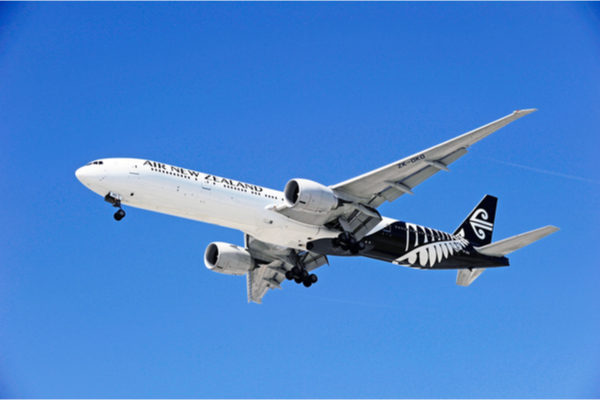In a significant strategic shift, Air New Zealand has announced the withdrawal of its 2030 carbon emissions reduction target. This decision comes amidst challenges related to new aircraft availability and alternative fuel sources.
The airline will now focus on setting a more achievable target that better aligns with current industry challenges. This move highlights the complex landscape of aviation sustainability and the external factors influencing airlines’ environmental strategies.
Challenges in Aircraft Availability
Air New Zealand’s withdrawal from its 2030 carbon emissions target largely stems from availability issues surrounding new aircraft. The global aircraft manufacturing industry is currently experiencing supply chain disruptions, impacting the delivery of the next-generation, more fuel-efficient airplanes that were integral to achieving the previous targets.
The airline’s Chief Executive, Greg Foran, highlighted the ‘additional risk’ posed by potential delays in fleet renewal plans. This delay means the company might need to extend the use of older aircraft, which are less efficient and do not support cutting-edge emissions reductions.
Constraints on Alternative Jet Fuels
The availability and affordability of alternative jet fuels present another hurdle for Air New Zealand. Despite the industry’s commitment to transitioning away from fossil fuels, the market for sustainable aviation fuels (SAFs) is not robust enough to support large-scale adoption.
Global and domestic regulatory support is crucial but currently inadequate, affecting the feasibility of a shift to SAFs. The airline has emphasized the importance of external support in establishing a viable market for these alternatives.
New Zealand’s regulatory landscape also plays a pivotal role. The current policies do not provide sufficient incentives or frameworks to promote the rapid adoption of alternative fuels, affecting airlines’ ability to commit to ambitious targets.
Strategic Outlook for 2050
Despite retracting its 2030 target, Air New Zealand remains committed to its 2050 net zero emissions goal. This long-term vision involves gradual advancements in technology and regulatory structures that can support sustainable aviation.
Dame Therese Walsh, Air New Zealand’s chair, reiterated the company’s ongoing efforts to transition away from fossil fuels. The airline is actively working with international and local bodies to shape policies that facilitate these changes.
The aviation industry faces a multifaceted challenge in achieving sustainability. Collaborations among airlines, manufacturers, and governments are critical to overcoming these obstacles and setting realistic targets for emissions reductions.
Industry-wide Implications
Air New Zealand’s decision sheds light on broader industry challenges. The reliance on external factors such as technology availability and regulatory support is a common theme among global airlines.
This scenario calls for increased cooperation among stakeholders to advance the aviation sector’s sustainability initiatives. The establishment of more effective frameworks and incentives could accelerate the transition to greener operations.
The International Air Transport Association (IATA) has noted similar constraints impacting airlines worldwide. There is a collective need for industry and governmental partnership to ensure the necessary resources and support are available.
Developing a New Carbon Emissions Target
Air New Zealand has commenced the development of a new emissions reduction target that takes into account the current industry context. This revised target aims to reflect more immediate, actionable steps that can be realistically achieved.
By doing so, the airline intends to maintain momentum in its sustainability journey while acknowledging the intricacies of the current situation.
Impact on Airlines’ Commitment to Climate Change
This development raises questions about other airlines’ commitments to emissions reductions. It highlights the ongoing tension between ambitious environmental goals and practical limitations.
For airlines, balancing climate commitments with operational realities remains a challenge. Often, external dependencies constrain the ability to fully realise ambitious targets.
The aviation sector continues to navigate the delicate balance of progress and feasibility in the context of climate change.
Conclusion and Future Direction
Though Air New Zealand has retracted its 2030 target, the airline remains focused on sustainable operations. It is actively pursuing a revised target that more comprehensively addresses the current challenges within the aviation industry.
The airline is optimistic about future advancements in technology and regulatory support, which are vital to meeting its long-term emissions goals.
Air New Zealand’s recalibration of its emissions targets underscores the complex network of challenges in achieving sustainable aviation. As industry dynamics evolve, ongoing collaboration and innovation remain key to overcoming obstacles and achieving environmental objectives.

